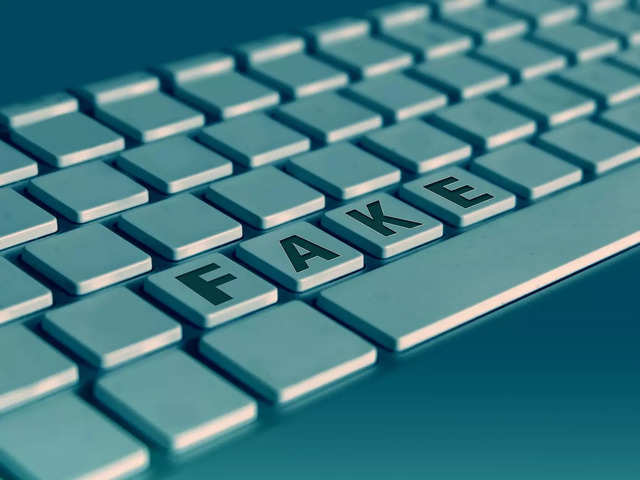
Sandeep Balani, Head of India, Outbrain
We recently caught up with Sandeep Balani, Head of India, Outbrain to understand some of the highlights of the year gon...
Jan 10, 2020, 10:00 IST
ad-tech
Why Outbrain is confident about the growth of programmatic native in India
Jan 10, 2020, 10:00 IST
We recently caught up with Sandeep Balani, Head of India, Outbrain to understand some of the highlights of the year gon...
Outbrain , a digital native advertising company was launched in India in 2017.- Last year, the platform launched Zemanta, the native Demand Side Platform (DSP) that it had acquired in 2017, in India.
- Sandeep Balani, Head of India, Outbrain tells us how Outbrain has been providing technology and strategic expertise to publishers, enabling them to reach, engage and retain audiences for their digital content.
- He also tells us why he is confident about the growth of programmatic native in India.
Closer home, Outbrain launched Zemanta, the native Demand Side Platform (DSP) that it had acquired in 2017, in India.
We recently caught up with Sandeep Balani, Head of India, Outbrain to understand some of the highlights of the year gone by, the growth drivers for Outbrain in India and some of the key areas of focus going ahead.
Edited excerpts:
Q) How is the Indian market shaping up for Outbrain?
According to market research agency Kantar IMRB, India's internet users are expected to register double-digit growth to reach 627 million in 2019, primarily driven by rapid internet growth in rural areas. This opens up huge opportunities for publishers and advertisers as they are able to reach and engage with a far larger part of the country’s population via their digital channels. Our role in this is to provide the technology and strategic expertise for publishers and enabling them to reach, engage and retain audiences for their digital content while funding quality journalism. On the advertisers’ side, through our non-intrusive, and respectful ad formats powered by our proprietary interest data, we give them a scalable way to engage their audiences and drive a significant return on their advertising investments. Most recently we have signed partnerships with NewsX, DailyThanthi and OneIndia Group, allowing us to give even more reach than ever before to our advertising partners.
Q) What are the key drivers for the growth Outbrain’s India business?
Our Founder and CEO were recently quoted as saying, “In 5 or 10 years, we will see that the most successful media will be those that respected their users and offered trustworthy material.” I think this is the case in India too, and the most important shift we will see is a move from intrusive ad formats to move native ad formats. This will be further accelerated by the growth of programmatic native, which has a huge potential in India. The video will also play an important role in the growth of native. We are shifting from banner blindness to video blindness - after all, we are the generation X, ie, the generation that just can’t wait to click on the X. Opt-in video formats where the user chooses to engage such as our Click-to-Watch video solution will increasingly replace ad formats that interrupt the users’ experience.
Q) A lot is being spoken about programmatic native. What's the scope? How does Zemanta fit into Outbrain’s overall programmatic offering?
Recent reports have predicted that by 2025, native will reach its tipping point and be the preferred form of advertising. It only makes sense that Native Programmatic will follow suit. With 90% of the display being purchased programmatically already, native will follow that same trend. However most of the media buying tools used by marketers were made for a display world and are not optimal for native advertising, so we believe we are best positioned to help marketers execute more effectively and at a larger scale, on the most premium and brand-safe environment. We are committed to programmatic native through an earlier acquisition of Zemanta, the world’s first DSP built for native and the DSP of choice for agencies. In addition to that, Outbrain now has omnichannel support for advertisers who are looking to buy native via Digital Video 360, Appenexus, Tradesk etc. This gives advanced controls overbidding and campaign flight.
Q) How will going the programmatic route help the native ecosystem grow?
The native eco-system in India has primarily relied on direct relationships with advertisers and agencies. However many clients take time to embrace newer platforms and introduce them to their buying mix. With programmatic alignment with assorted DSP’s, advertisers can now buy Outbrain via different DSP’s which gives us access to unique budgets and get more advertisers to grow the native eco-system which eventually brings tremendous transparency, reach, and control to advertisers.
Q) Going ahead, what will your area of focus be?
We have received great response from the premium publishers due to the quality of ads, trustworthiness and the relationships we have built in the market for audience acquisition, engagement, and retention. Our prolonged objective is to ensure that we empower our publisher ecosystem with more monetization opportunities.
Q) What will be the most important theme for the publishing and advertising industry in 2020?
Trust! User trust has been eroded because of factors such as disruptive ad formats, fake news etc. The whole industry must now come together and rebuild consumer trust and creating value on the open web that works for everyone.
Users want to discover relevant, trusted, high-quality content presented in engaging formats. Marketers are looking for scalable ways to engage their audiences and channels they can invest in to drive return on their advertising budgets. And publishers need to find business models to fund quality journalism alongside ways to reach and develop ongoing relationships with audiences.
Simply put, it will be all about publishers, audiences and marketers coming together to create an ecosystem that drives mutual value and trust on the open web.
INSIDER INTELLIGENCE REPORTS







